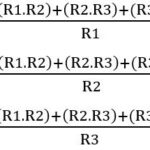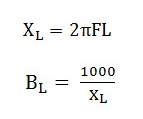Open Loop and Closed Loop Testing in LTE
As we previously learned about LTE (Long Term Evolution), now it’s time to understand the testing mechanisms that ensure everything works smoothly. Today, I’ll explain open loop and closed loop testing in LTE. These methods help assess how well the system handles various conditions and adapt to changing environments, which is crucial for maintaining optimal performance.
When I talk about testing in LTE, you need to know that the terms open loop and closed loop refer to how feedback is used during the testing process. In open loop testing, there’s no feedback or adjustments during the test, while in closed loop testing, real-time feedback is used to make adjustments on the fly. These two approaches serve different purposes, but both are vital to the network’s efficiency.
Open Loop Testing in LTE
- In open loop testing, there’s no feedback from the receiver to the transmitter.
- The system operates independently, relying on pre-configured settings.
- It’s mainly used in the initial phases to check basic functionality.
- Helps test signal strength, basic throughput, and cell coverage.
Open loop testing is essential when you first deploy the network or when you need to evaluate the initial performance of your LTE setup. For example, when you test the basic performance of the base station and devices without needing real-time adjustments, open loop testing does the job. It gives you a solid foundation for further, more advanced testing.
Closed Loop Testing in LTE
- In closed loop testing, real-time feedback from the receiver is used to adjust the system.
- Ensures dynamic changes are handled correctly, such as signal adjustments based on varying conditions.
- It’s used to assess things like handovers, mobility, and real-time adaptation to interference.
- Helps optimize throughput, reduce latency, and handle load balancing.
Closed loop testing comes into play when the system needs to adapt dynamically. It’s critical when you’re dealing with live traffic, interference, or when you want to ensure handovers and mobility work seamlessly. For instance, when the network needs to adjust signal strength or power control during active calls or data transfers, closed loop testing helps manage those scenarios effectively.
Open Loop vs Closed Loop – Quick Comparison
| Testing Type | Feedback | Purpose | Used For |
|---|---|---|---|
| Open Loop | No feedback | Basic functionality testing | Signal strength, coverage, throughput |
| Closed Loop | Real-time feedback | Dynamic adjustments and optimization | Mobility, handovers, interference handling |
As we discussed, both testing types are crucial. Open loop testing sets the stage, allowing you to understand the initial functionality and basic parameters. Closed loop testing then takes over to ensure that the system adapts in real-time, handling dynamic network conditions like interference and mobility. In LTE, you’ll find that both are used in conjunction to provide a robust and flexible network performance evaluation.
Remember, in LTE, the proper balance of open loop and closed loop testing ensures that the network can handle both static conditions (like coverage) and dynamic conditions (like mobility or interference). So, whenever you’re evaluating an LTE network, it’s essential to know which test you’re running and why it’s important for the system’s performance.


